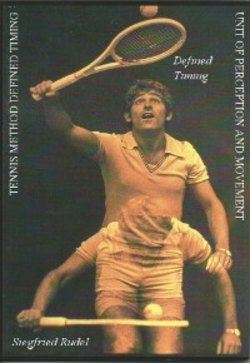Читать книгу Tennis Method - Defined Timing - Siegfried Rudel - Страница 5
PREFACE
ОглавлениеAt present, interdisciplinary research focusses on behaviour theories: They are dealt with by psychology, biology, sport science, industrial science and anthropological medicine. One of the starting points was V. v. WEIZSÄCKER's Gestaltkreis, which is a theory of perception and movement. Perception and movement form a unit, not only as a sensorimotor functional connection, but also as the working together in comprehensive 'biological acts' or 'per-formances'. As v. WEIZSÄCKER's assistant and successor, I take the liberty to give my opinion on the work presented by Siegfried RUDEL: It is a further development of the Gestaltkreis in the area of movement theory, shown with the example of tennis and the development of a teaching method called 'defined timing'.
Tennis is an interaction game between two opponents which integrates fast ballistic movement sequences. From the point of view of behavioural theory, it is an 'open', complex system. In such systems, there are 'guiding lines', which resemble so-called 'operative systems of representation' and 'inner·models' - i.e. 'schemata' which continuously coordinate the part actions. The author's teaching method is centred around 'defined timing' with gravitation as the connecting factor between perception and movement. As far as time is concerned, form and content are connected by the invariance of gravitation by means of a form movement.
The principle found is related to a special principle of the compositional act of seeing which was found in V.v. WEIZSÄCKER's Gestaltkreis laboratory. For example, fluorescent points moving around in a dark room are perceived by the seeing eye as deviating from their objective course in such a way as one would expect them to move individually and towards each other if they were guided by any physical law. That means that the seeing eye behaves as if it knew this law. V, v. WEIZSÄCKER and his assistants called this principle nomophily or nomotropy.
This behaviour cannot be derived from the classical aestesiophysiologica1 theory of perception and points into a direction which can be assigned to the compository act of performance under more difficult conditions, namely to the special conditions which in the earlier experiments were attached to the 'emptiness' of the field of vision or a more complex move-ment. Similar conditions prevail in the author's investigations on the complex field of interaction in tennis. It is a special biological act which reveals itself in a form principle which could be summed up by the the keyword 'complexity reduction'. Considered as a whole, RUDEL's work can be seen as a confirmation of 'nomophily' (nomotropy) and an expansion of sport science. This and the whole investigation by S. RUDEL will perhaps lead to completely new discoveries.
Prof. Dr.med. P. Christian
Allgemein-klinische und Psychosomatische Medizin
Klinikum der Universität Heidelberg
